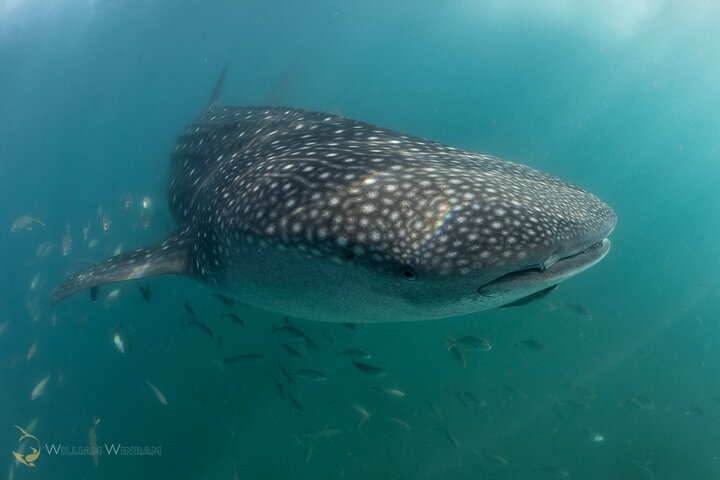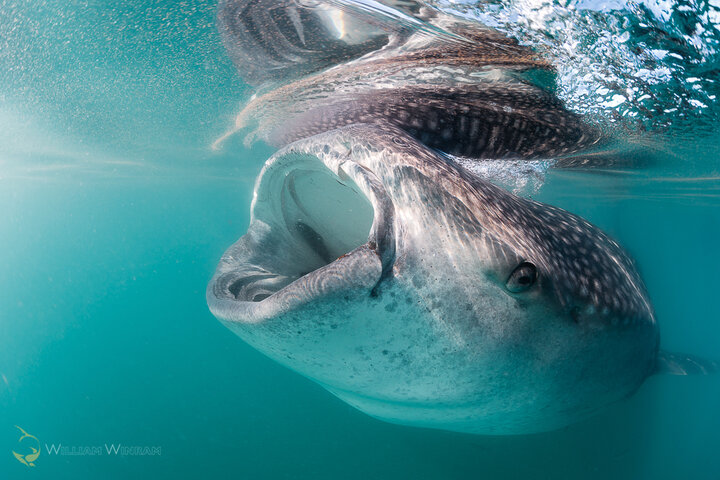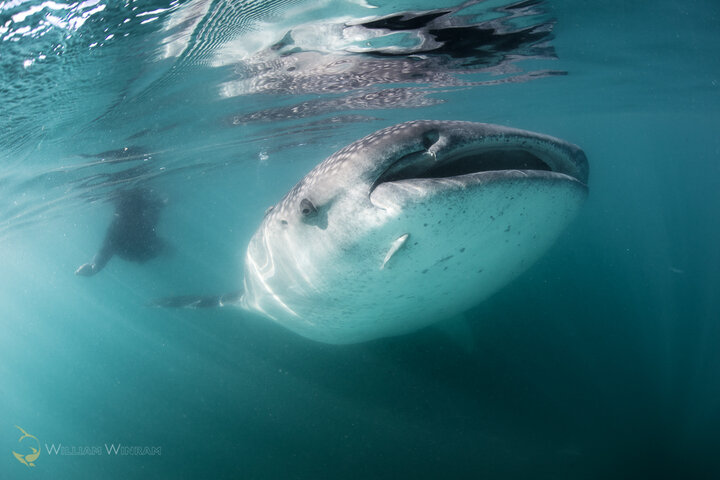Shooting Tips: Canon 5D Mark IV in Poor Vis
It had been more than 20 years since I had last dove in La Paz, Mexico and this was long before I ever thought about taking photos underwater. Our time in La Paz was to be split between sessions with the whale sharks and sessions freediving on a line working on technique with our young ambassadors and instructors before heading out to sea with the Nautilus Explorer to tag scalloped hammerhead sharks in the Revillagigedo Archipelago.
Notes on Testing the 5D Mark IV
Prior to the trip, I procured myself a new Canon 5D Mark IV and did some tests in the pool back home to see that the extension ring for the Canon 16-35mm lens was optimal and allowed for clear images. With my previous camera (Canon 5D Mark II), I was never able to capture the same clarity in my photos as I could with the Sigma 15mm fisheye. I later discovered that the issue was that the extension ring not properly sized for the lens.
And so I spent an hour in the pool playing with my new camera. Not easy shooting in the pool since I only use natural light and the pool is not particularly well lit, but it was enough to know that the housing set up worked for both lenses.

Canon 5D Mk IV in La Paz
Day one in La Paz, Mexico was the first day in the sea with the Canon 5D Mark IV. We arrived to the dive site after a 10-minute ride in a panga. Almost immediately there were whale sharks. I jumped in, turned the camera on and took a look around, assessing that there was barely 2 meters of visibility as the water was filled with plankton! I spun around, grabbed the edge of the boat and pulled myself up enough to place my camera back on the bench in the boat. I was not at all excited at the limited photo opportunities possible with such poor visibility and actually thought that it was hopeless. After all, earlier in the year I had been in the Maldives with visibility much better than this and even then it was challenging to capture an image that was not “foggy” with the plankton.
I paused as I placed the housing on the bench and decided to persevere with the camera to at least get comfortable with the set up and controls of the new system. This was, after all, a chance to work with the camera before heading out to the Revillagigedo Archipelago.

As I turned around and dropped back into the water a medium-sized whale shark swam into view, opening its mouth to feed. I snapped the first photo and as I reviewed I was shocked! I looked at the image in the camera, looked out into the murky bay, back at the image, back into the murk… how was it possible that the camera captured an image that even my eyes did not see!!!
I was completely blown away by the camera and as I compared the images to those from buddies shooting with the 5D Mark II, it was clear that the Mark IV was on a completely different level.
I still needed to be mindful of the position of the sun relative to myself and my subject, or else even this camera was challenged by the poor visibility. As the morning progressed and as the sun moved higher into the morning sky it became more challenging as the sun lit up the plankton. The key, it seemed, was to be in the water early in the morning when there was sufficient light but before the sun was too high in the sky.

Out of five days we had two that were really good for both the lighting and the sharks - when the whale sharks showed up early in the day so the sun was low in the horizon but with still enough light to get some nice photos. The other days it seemed the whale sharks decided to start their day later in the morning and with those overhead light conditions I found it much more difficult to get close to a clean shot.
I cannot complain about the number of sharks we encountered nor the conditions, but I left La Paz pining for a return trip during a season that had better visibility. I am hoping to return later this year and to spend a bit more time in the area enjoying La Paz and the Baja Peninsula with the Canon 5D Mk IV.
RECOMMENDED ARTICLES
SUPPORT THE UNDERWATER PHOTOGRAPHY GUIDE:
The Best Service & Prices on u/w Photo Gear
 Visit Bluewater Photo & Video for all your underwater photography and video gear. Click, or call the team at (310) 633-5052 for expert advice!
Visit Bluewater Photo & Video for all your underwater photography and video gear. Click, or call the team at (310) 633-5052 for expert advice!
The Best Pricing, Service & Expert Advice to Book your Dive Trips
 Bluewater Travel is your full-service scuba travel agency. Let our expert advisers plan and book your next dive vacation. Run by divers, for divers.
Bluewater Travel is your full-service scuba travel agency. Let our expert advisers plan and book your next dive vacation. Run by divers, for divers.
































